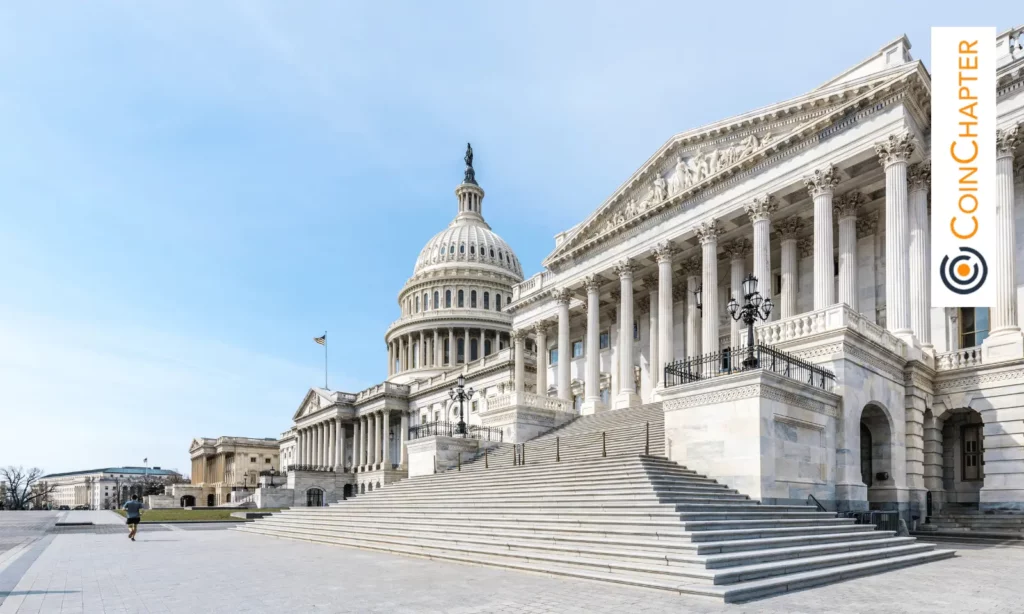
NAIROBI (Coinchapter.com) – This week marked significant legislative movements in the U.S. crypto landscape, headlined by the introduction of the Senators’ Stablecoin Bill, known as the Lummis-Gillibrand Stablecoin Bill. Senators Cynthia Lummis (R-WY) and Kirsten Gillibrand (D-NY) unveiled a comprehensive proposal that sets the stage for a regulated framework under which banks and trust companies could issue stablecoins.

The proposed legislation stipulates strict reserve and disclosure requirements, delineates roles for both state and federal regulators, and provides mechanisms for the orderly wind-down of failing issuers. Notably, it imposes a sweeping prohibition on algorithmic stablecoins, barring a few exceptions. This legislative effort aligns with broader government moves to integrate digital assets into the regulated financial system while addressing potential risks to financial stability.
Lummis-Gillibrand Stablecoin Bill: A New Regulatory Framework
The Senators’ Stablecoin Bill, introduced on Wednesday, sets forth rigorous standards for issuing stablecoins. Banks and state-chartered trust companies may issue stablecoins if they meet stringent criteria, including a 1:1 reserve ratio with highly liquid assets and adherence to Federal Reserve regulations. This proposal also introduces robust transparency measures, requiring monthly disclosures of reserve assets and compliance with the Bank Secrecy Act.

Senators Lummis and Gillibrand argue that their bill is necessary to position the U.S. as a leader in financial innovation while ensuring that the explosive growth of crypto assets occurs within a regulated and safe environment.
“Crypto assets are revolutionizing the world and as the undisputed leader in financial innovation, the U.S. must embrace crypto assets, but it cannot be done without clear rules for stablecoins.”
Senator Lummis tweeted

Evaluating the issuer’s financial stability and ability to manage risks is central to the approval process. The bill strictly prohibits the issuance of algorithmic stablecoins, except under specific, limited conditions approved by the Federal Reserve.
HFSC Advances Financial Services Innovation
On the same day, the HFSC approved the Financial Services Innovation Act by a party-line vote. This bill aims to foster innovation by allowing firms to propose alternative compliance frameworks, facilitating more tailored regulatory oversight. This move could significantly enhance public access to innovative financial products while ensuring consumer protection and financial system stability.
The resolution H.J. Res. 120, which passed alongside, seeks to limit the Financial Stability Oversight Council’s (FSOC) authority over nonbank financial entities. This is a significant step that could alter how emerging fintech and crypto companies are regulated.
Lummis-Gillibrand Stablecoin Bill Draws Criticism from Coin Center
However, the bill faces significant criticism for potentially stifling innovation and breaching First Amendment rights. Coin Center, a leading policy advocacy group for cryptocurrencies, argues that the prohibition of algorithmic stablecoins could impede the progress of decentralized financial technologies.
“Doing so would be not just bad policy but unconstitutional as well,”
Brito states.
In fact, Jerry Brito of Coin Center criticizes the ban, stating it limits technological innovation and may infringe on free speech rights. He recommends a nuanced approach that permits technological progress within a regulated framework. This approach would align more closely with legislative efforts favoring temporary restrictions over complete bans.
Implications and Next Steps
Above all, as these legislative efforts progress, they set the stage for a potentially transformative era in U.S. crypto regulation. Moreover, the alignment—or conflict—between these proposals and existing laws will likely influence their final forms and implementation timelines. Integrating these regulatory frameworks with global standards is crucial for the U.S. financial system’s competitiveness and security.
Certainly, Senate and House leaders are actively negotiating key details of the bill, focusing on permissible issuers and oversight mechanisms. Indeed, the results of these negotiations will significantly influence the future of stablecoins and the broader U.S. digital finance landscape.


